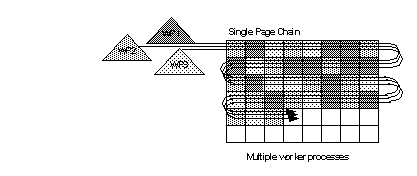Figure 24-4 shows how three worker processes divide the work of accessing data pages from an allpages-locked table during a hash-based table scan. Each worker process performs a logical I/O on every page, but each process examines rows on only one-third of the pages, as indicated by the differently shaded pages. Hash-based table scans are used only for the outer query in a join.
With only one engine, the query still benefits from parallel access because one worker process can execute while others wait for I/O. If there are multiple engines, some of the worker processes could be running simultaneously.
Figure 24-4: Worker processes scan an unpartitioned table

Hash-based table scans increase the logical I/O for the scan, since each worker process must access each page to hash on the page ID. For data-only-locked tables, hash-based table scans hash either on the extent ID or the allocation page ID, so that only a single worker process scans a page, and logical I/O does not increase.